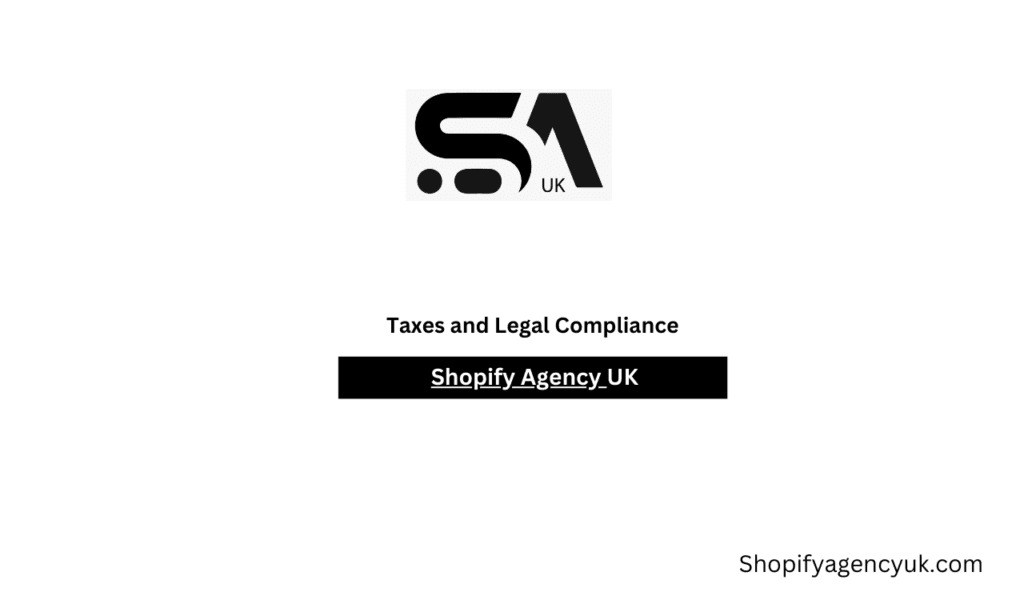By being a Shopify store keeper myself, I have realized the importance of properly handling taxes and being in compliance with the law. I am going to share my knowledge and the things that I have learned to help you travel through the labyrinth of eCommerce taxes and regulations.
Why Setting Up Taxes and Legal Compliance Is Important

It is crucial to tackle taxes in the right manner and follow legal norms as my experience confirms as in this case we are all winning and first among them are our customers. We can do such things as:
- Tax Collection: It guarantees that we charge the right amount of tax to our customers naively by their different locations.
- Legal Requirements: It saves us from violations and closures under for example. if authorities find us not complying with the local rules and regulations which would lead to heavy fines.
- Customer Trust: Our clients are more likely to return if we show them the tax details clearly and are complete in our legal issues, which means that we express each and everything during the checkout stage.
Step 1: Understanding Your Tax Obligations
There is no point in setting taxes on Shopify if you do not know the obligations set out by the tax laws. However, the place where we operate and the place where we sell our products is a significant determinant as to whether we are to pay taxes or not. The cardinal notions to take into account here are:
- Nexus: A nexus is a connection that links our company to a state or country, which incorporation requires the collect of taxes.
- Physical Nexus: The presence of a building, storage, or personnel in a certain region.
- Economic Nexus: According to some jurisdictions, if we exceed a specific threshold, the tax should be paid.
- Product Type: It is possible that there are some goods that are not taxable in certain regions.
- International Sales: If we are dealing with the international market, we might need to register for either VAT or GST in consonance with the country’s requirements.
Step 2: Configuring Taxes on Shopify
I have recognized that Shopify provides a straightforward tax setting. What we should do is as follows:
- Access Shopify Tax Settings: Go to the drop-down menu under the “Settings” tab and select “Taxes and Duties”.
- Enable Automatic Tax Settings: Clicks agree to activate the auto tax rate option if available.
- Add Tax Regions: Move the cursor over Set Up and a window will pop up so you can include the required regions where we need to collect taxes.
- Customize Tax Settings: We must do it for each region, depending on how taxes are represented and collected
- Manage VAT and GST: Supply VAT or GST registration details if it applies.
- Add Tax Overrides and Exemptions: Turn the tax overrides on if you need to restrict the tax for some product category.
Step 3: Ensuring Legal Compliance
In relation to practices from my personal experience, legal compliance is an issue much broader than tax configuration. There are some particular issues that need attention. They are:
1. Privacy Policy and Terms of Service
It is vital to have detailed notices that will let the customers understand what information is being collected, how it is being used, and what safety measures are being used to protect the information, thereby ensuring compliance with laws such as GDPR and CCPA.
2. Cookie Consent and GDPR Compliance
If we are selling products to customers in the EU, then we have to comply with GDPR. Thus, this implies that we must display cookie consent banners and ensure that users have the ability to access, erase or modify their information.
3. Business Licenses and Permits
It is possible that a certain country or area has some legal requirements, like licenses and permits, in order for us to legally operate our business.
Step 4: Managing Tax Reports and Filing

Once taxes have been setup, the next step is to keep all tax records in order and file return forms in a timely manner. Shopify has an inbuilt tax reporting package which allows us to monitor the taxes collected and give the correct amount to the authorities.
Conclusion
Setting up taxes and ensuring legal compliance on your Shopify store is a critical step in establishing a successful e-commerce business. By following the right procedures, from registering for taxes to managing VAT and sales tax, you can avoid potential legal pitfalls and create a seamless experience for your customers.
Whether you’re navigating tax requirements or ensuring compliance with local regulations, having the right systems in place will give you peace of mind as your business grows.
If you find the process daunting, working with a Shopify agency in the UK can simplify things. These experts are familiar with UK tax laws and regulations and can help you set up your Shopify store for success. From handling VAT registrations to ensuring your store meets all compliance standards, a Shopify agency offers the guidance you need to keep your business legally sound and operating efficiently. Don’t leave your tax and legal setup to chance—seek professional assistance and focus on growing your brand.
FAQs
Here are some questions that I have been asked frequently:
- How can I install taxes on my Shopify store?
- When do I have to collect taxes in all areas?
- What is GDPR compliance for Shopify?
- How to generate tax reports in Shopify?
- Must I acquire business licenses to operate on Shopify?
- Will Shopify assist me in filing VAT/ GST returns?
By using this guide, we can ensure that our Shopify stores maintain their tax credibility and are in full compliance with the laws, which thereby give the customers a secure and satisfied buying experience.
